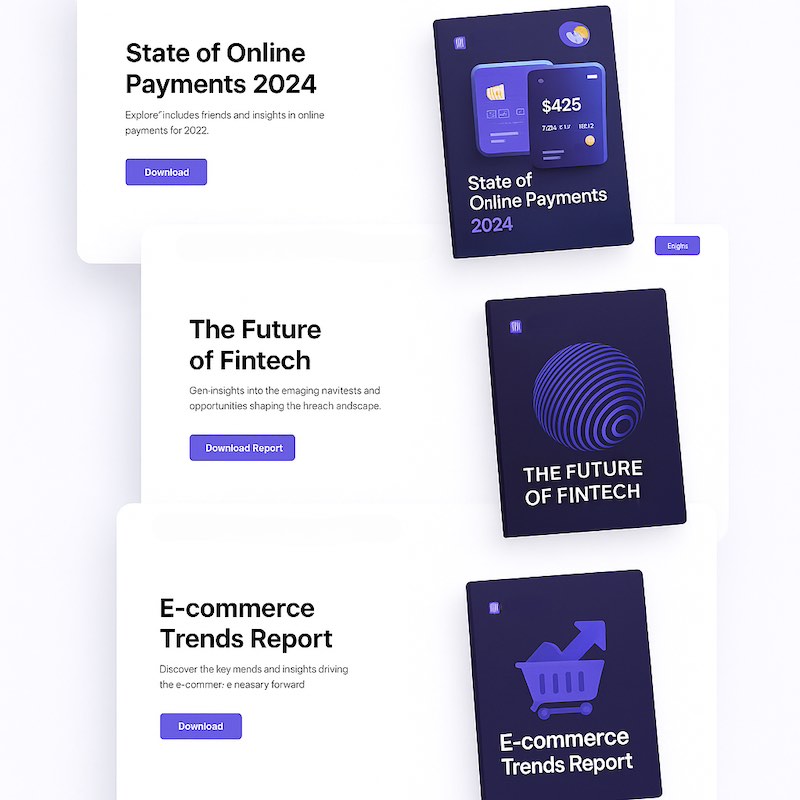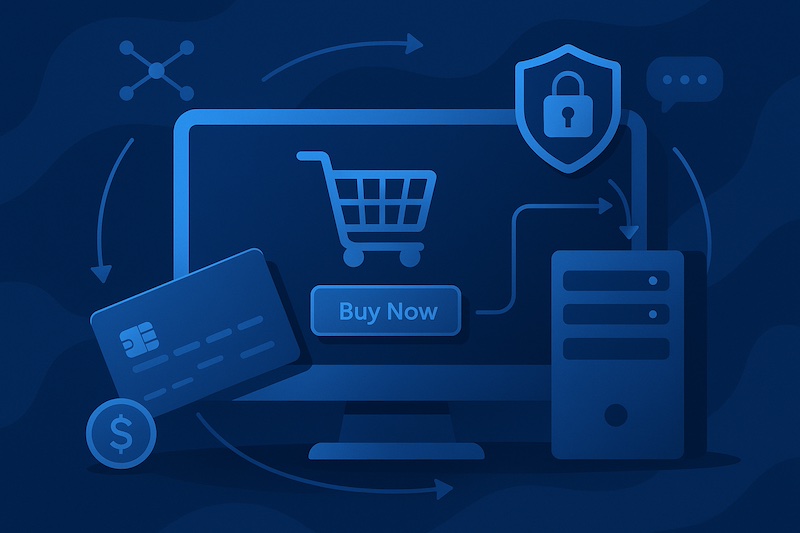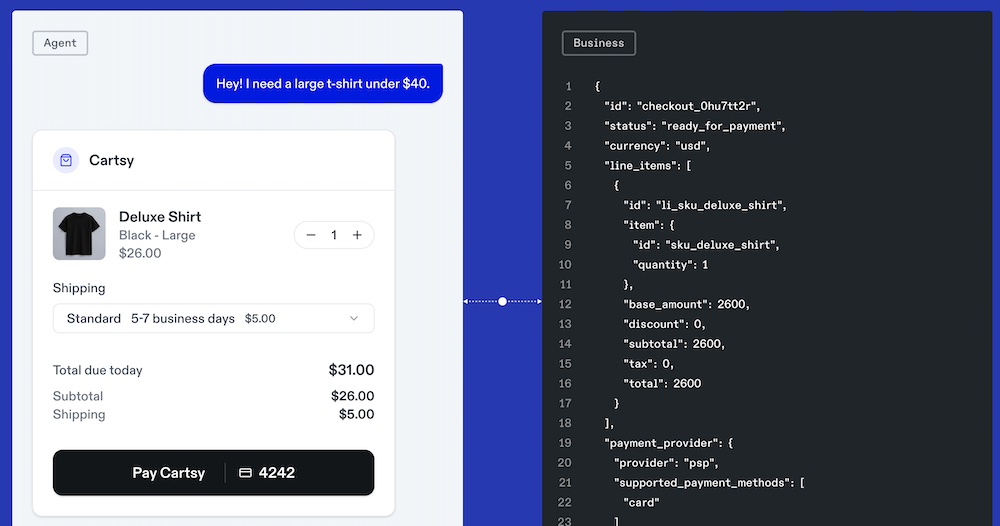40+ AI-supported tools for the debt collection industry

Author
Karol ZielinskiAI in debt collection is not a futuristic future; it is simply happening. Artificial Intelligence (AI) is already changing the game in the debt collection industry today. It is a reality that brings tangible benefits to debt recovery companies. For CFOs, heads of collection departments, and decision-makers in fintechs and collection companies, this means an opportunity to streamline processes and gain a competitive edge.
In an era of growing portfolios of overdue payments and increasingly demanding regulations, AI offers a new, more effective approach to debt recovery. Initial implementations show impressive results—AI-supported automation can increase the efficiency of collection teams by 2-4 times and reduce operational costs by 30-50%, while the use of predictive analytics raises the debt recovery rate by an average of 25% (source: kaplancollectionagency.com).
However, AI is not just a technological trend but primarily a response to the specific challenges of the debt collection sector. In practice, AI effectively addresses the following challenges of the debt collection industry:
- Effectiveness of contact with debtors – AI helps to reach debtors at the right time and through the right communication channel, significantly increasing the efficiency of contact and the chances of debt recovery. Intelligent chatbots and communication systems operate 24/7, maintaining constant contact with clients and responding quickly to their replies.
- Personalization of actions – Intelligent algorithms tailor the collection strategy to the individual situation of each debtor (from the tone of communication to the repayment plan), which increases the effectiveness of actions and builds better relationships with the client. Instead of a universal approach, AI allows for treating each debtor in a manner tailored to their history and preferences, enhancing debt collection.
- Process automation – Routine tasks such as sending payment reminders, monitoring deadlines, or updating data can be performed automatically by AI systems. Such automation relieves employees from repetitive work, speeds up the entire collection process, and minimizes the risk of human errors.
- Predictive analysis – Advanced data analysis allows AI to predict debtor behaviors and debt recovery outcomes. Learning algorithms identify patterns in the data and predict which debts are most (or least) likely to be repaid. Thanks to these predictions, companies can proactively focus efforts where they will yield the best results, instead of operating blindly.
- Compliance with regulations – AI tools monitor collection processes for compliance with regulations (such as data protection laws like GDPR or industry-specific regulations concerning customer contact). Automatic systems detect potential violations and ensure that procedures remain within legal boundaries, reducing the risk of penalties and protecting the company’s reputation.
The following list of 40+ AI-supported tools is a practical compendium for companies seeking a technological edge. You will find solutions that genuinely streamline the collection process – from increasing team efficiency and personalizing communication, to full automation and ensuring regulatory compliance. We invite you to explore this compilation and discover tools that can elevate the collection processes of your company to a higher level of efficiency and innovation.
What does this look like in a manual debt collection process?
Manual debt collection processes – while operational and having provided tangible benefits for years – have their problems and limitations.
Basic obstacles that occur in the manual debt collection process:
- They require resources and are costly: Manual debt collection requires a large number of employees and repeated follow-up actions, which increases costs.
- Inconsistent follow-up actions: Without automation, follow-up actions (subsequent notifications, summons, phone calls) are often delayed, resulting in longer cycles and lower debt recovery rates due to a lack of optimal contact timing.
- Pressure to comply with regulations: Compliance in debt collection is very important, and manual processes are prone to errors, increasing the risk of non-compliance and potential legal issues.
- Limited real-time analysis: Manual methods do not provide insight into customer behavior in real-time, which prevents making corrections based on data and predictive analysis.
Categories of AI tools in debt collection
And precisely because of these issues in manual collection, tools based on artificial intelligence are increasingly used in this industry.
We often talk about specialized technological solutions here. Artificial intelligence is not just an add-on – it becomes a key component of modern ecosystems for managing receivables. To organize the vast possibilities, we have added a categorization of the available tools, which also reflects the various stages and needs in the debt recovery process.
- Process Automation and Workflow
Tools in this category allow for the automation of repetitive tasks, such as sending notifications, scheduling actions, or updating case statuses. Thanks to AI, automation can operate contextually—taking into account the customer’s history, level of debt, or previous behavior.
- Scoring and Repayment Prediction
Predictive algorithms analyze financial, behavioral, and external data to forecast which debts are most likely to be repaid. Such tools help prioritize actions and optimize the resources of the collection team.
- Communication with Debtors (chatbots, voicebots, other automation)
AI has revolutionized communication—thanks to various types of bots, it is possible to handle debtors automatically around the clock. Importantly, these tools learn continuously and can recognize emotions, intentions, and risk levels to conduct conversations in a more “human” and empathetic manner.
- Document Analysis and OCR
AI solutions support the reading and interpretation of documents, such as contracts, payment demands, or court correspondence. Thanks to OCR technology and natural language processing (NLP), tools can automate document classification, extract data from them, and initiate appropriate actions.
- Sentiment and Emotion Analysis
More and more companies are using emotion analysis in conversations (e.g., phone or email) to recognize the level of stress, frustration, or willingness to cooperate on the part of the debtor. This allows better adjustment of the communication tone and increases the chances of a positive case resolution.
- Monitoring and Analyzing Financial Data
AI tools integrate with banking and accounting systems, monitoring financial flows, debt levels, and changes in the client’s situation in real-time. This enables quick response to warning signals and adjustment of action strategies.
- Immediate Response Thanks to Integrations with CRM and ERP Systems
Modern AI tools seamlessly work with popular – as well as proprietary – CRM and ERP systems, creating a coherent data ecosystem. Integration allows automatic information transfer between departments, speeding up actions and reducing the number of errors.
- Compliance and Fraud Detection
AI supports compliance with legal regulations (e.g., GDPR, local laws, EU regulations), monitoring processes and alerting in case of detected irregularities. Additionally, some solutions help detect abuses and suspicious patterns in data.
With this division, it will be easier to understand which tools meet the specific needs of your company. In the following sections, you will find 40+ specific AI solutions—assigned to these categories. Ready for specifics? Let’s get started.
Top AI Tools Supporting Debt Collection
1. Sovva.ai
Voice bot automating contact with debtors, conducting telephone conversations, collecting repayment declarations, and updating CRM systems.
Category: Process Automation and Workflow; Communication with Debtors
Usage: Automatic handling of a large number of debt collection cases without involving employees.
2. Asseco Softlab ERP
ERP system with AI features, automating collection actions such as scheduling reminders, generating documents, and segmenting clients.
Category: Process Automation and Workflow; Scoring and Repayment Prediction
Usage: Comprehensive management of the collection process from overdue payments to enforcement actions.
3. CRIF
Solutions that analyze customer data, predict payment behaviors, and automate collection actions.
Category: Scoring and Repayment Prediction; Financial Data Analysis
Usage: Improved credit risk management and optimization of debt recovery processes.
4. Alphamoon
AI tool automating document analysis in collection processes, speeding up the processing of large amounts of data.
Category: Document Analysis and OCR; Process Automation and Workflow
Usage: Faster acquisition of information from documents, enhancing the efficiency of collection actions.
5. Emagia
A set of tools automating debt management processes, such as invoice tracking, payment reminders, and communication with clients.
Category: Process Automation and Workflow; Communication with Debtors
Usage: Enhancing the efficiency of collection operations through the automation of routine tasks.
6. Daktela
Contact center system with AI features, automating collection activities, call scheduling, and call quality monitoring.
Category: Communication with Debtors; Process Automation and Workflow
Usage: Increasing the efficiency of client contact in the collection process.
7. Tesorio
Platform automating receivables processes, utilizing AI to predict cash flows and optimize contact strategies.
Category: Process Automation and Workflow; Scoring and Repayment Prediction
Usage: Improving cash flow management and collection efficiency.
8. Upflow
Tool for managing invoices and payments, using AI to analyze payment history and suggest optimal contact times.
Category: Process Automation and Workflow; Scoring and Repayment Prediction; Monitoring and Analyzing Financial Data
Usage: Shortening the debt recovery cycle and reducing overdue payments.
9. Chaser
System automatically reminding about payments, integrated with accounting systems, personalizing messages through machine learning.
Category: Communication with Debtors; Process Automation and Workflow
Usage: Reducing the number of unreminded receivables and increasing communication effectiveness.
10. CollectAI
AI tool for automating the entire debt collection process – from sending reminders to negotiating repayment terms. Supports various communication channels (email, SMS, WhatsApp) and dynamically selects messages based on debtor behavior.
Category: Communication with Debtors; Process Automation and Workflow
Usage: Automating debt recovery in digital channels using AI for personalization.
11. mKomornik
Polish tool designed for bailiff offices, supporting the handling of enforcement cases. It offers automation features and integration with external systems (e.g., ePUAP, EPU, CEIDG, ZUS). AI mechanisms for pattern recognition in cases and allocation of actions are increasingly being incorporated.
Category: Process Automation and Workflow; Integration with ERP Systems/Public Institutions
Usage: Effective management of a large number of enforcement cases, document handling automation, and integration with registries.
12. TrueAccord
Platform for soft collection using machine learning to build contact strategies with debtors. Based on behavior analysis, it operates mainly in the USA but can serve as an inspiration for similar implementations in Europe.
Category: Communication with Debtors; Scoring and Repayment Prediction
Usage: Effective online collection without engaging traditional call centers, increasing debt recovery.
13. Collectly
Specialized debt collection platform (primarily in the healthcare sector), with a strong AI module for managing contacts and responding to debtor reactions.
Category: Communication with Debtors; Process Automation and Workflow
Usage: Customizing collection pathways in real time according to client responses.
14. Aston AI
French platform for automating debt collection. It offers tools for managing the recovery process, reporting, and optimizing actions. Enables scenario personalization and integration with ERP systems.
Category: Process Automation and Workflow; Scoring and Repayment Prediction
Usage: Comprehensive debt collection management for B2B and B2C companies, streamlining operational activities.
15. HighRadius
HighRadius is a cloud-based financial platform that leverages artificial intelligence to automate and optimize processes in areas such as Order to Cash, Treasury, and Record to Report. By applying advanced technologies, HighRadius helps companies increase operational efficiency and improve cash flow management.
Category: Process Automation and Workflow; Financial Data Analysis; Integration with ERP Systems
Usage: Automation of collection processes, receivables management, cash flow forecasting, and optimization of financial operations in enterprises.
16. InDebted
InDebted is a global fintech platform that is transforming the debt collection process through the use of technologies such as machine learning. It personalizes each collection journey, delivering a more humane and effective experience for clients managing debt.
Category: Process Automation and Workflow; Communication with Debtors; Data Analysis
Usage: Automation of the collection process, personalized communication with debtors, and improved recovery efficiency through data analysis and machine learning.
17. ApPello
ApPello is a specialized digital platform focused on delivering modern solutions for digital lending and credit management. It offers comprehensive tools supporting processes related to loan origination, management, and debt collection, ensuring efficiency and scalability for banks of all sizes.
Category: Process Automation and Workflow; Financial Data Analysis; Integration with ERP Systems
Usage: Automation of loan origination processes, loan portfolio management, optimization of collection activities, and integration with existing banking systems.
18. Floatbot AI Collection Agency
Floatbot AI Collection Agency is a platform that uses generative artificial intelligence to automate debt collection processes. It offers advanced voicebots and chatbots that engage in conversations with debtors, increasing collection efficiency. The system is fully compliant with regulations such as Reg F, FDCPA, TCPA, HIPAA, PCI-DSS, and others.
Category: Process Automation and Workflow; Communication with Debtors; Data Analysis
Usage: Automating debtor contact through voicebots and chatbots, improving debt recovery effectiveness, reducing operational costs, and ensuring compliance with legal regulations.
🔗 https://floatbot.ai/ai-collection-agency
19. Tovie AI Debt Collections Bot
Tovie AI Debt Collections Bot is an advanced tool that leverages artificial intelligence to automate the debt collection process. It enables personalized conversations with debtors across various communication channels such as voice, SMS, WhatsApp, Telegram, and email. The bot can respond empathetically to individual debtor circumstances, leading to improved collection success rates.
Category: Process Automation and Workflow; Communication with Debtors; Data Analysis
Usage: Automating debtor contact through voicebots and chatbots, increasing debt recovery effectiveness, reducing operational costs, and ensuring compliance with legal regulations.
🔗 https://tovie.ai/debt-collections-bot
20. Kolleno
Kolleno is a platform for automating receivables management, integrating debt collection, payment, and reconciliation processes in one place. By leveraging artificial intelligence, Kolleno optimizes financial workflows, reduces manual tasks, and increases collection efficiency. The platform also offers advanced reporting and data analysis features to support informed financial decision-making.
Category: Process Automation and Workflow; Communication with Debtors; Data Analysis
Usage: Automating the debt collection process, managing receivables, optimizing communication with debtors, and analyzing financial data to improve cash flow.
21. SmartReactor (Pirxon)
SmartReactor is a program for intelligent automation of debt collection and comprehensive receivables management, designed to address the functional gaps of the most popular accounting and ERP systems.
Category: Process Automation and Workflow; Financial Data Analysis; Credit Risk Management
Usage: Improving cash flow by reducing receivables turnover, lowering the cost of debt servicing, monitoring and optimizing collection processes, and analyzing and managing counterparties’ credit risk.
22. VSoft Collection and other products by VSoft
VSoft is a company specialized in developing tools that support scoring and debt collection processes. Their solutions use a combination of financial data, credit history, and other information available from external databases.
Category: Scoring and Repayment Prediction; Financial Data Analysis; Process Automation and Workflow
Usage: Credit risk assessment in banks, automation of creditworthiness evaluation, and integration with external databases for client information verification.
23. EDM 3.0. | ENTERPRISE DEBT MANAGEMENT (by Pivotal)
EDM 3.0 is an advanced IT solution developed by Pivotal, dedicated to comprehensive receivables and debt management in banks and enterprises. The system enables agile management of standard tasks and the implementation of dedicated strategies—from prevention and ongoing monitoring of overdue payments to full support for the collection and restructuring process.
Category: Process Automation and Workflow; Financial Data Analysis; Credit Risk Management
Usage: Automation of receivables monitoring, collection, and restructuring processes; implementation of preventive strategies; credit risk analysis; integration with existing organizational systems; improving collection efficiency through the use of predictive models and artificial intelligence.
🔗 https://pivotal.pl/produkty/windykacja/
24. Skit.ai
Skit.ai is a leading Conversational AI platform dedicated to the debt collection industry, enabling automated communication with debtors through multi-channel AI-powered assistants. The platform integrates with CRM systems, telecom infrastructure, and payment gateways, ensuring regulatory compliance and efficiency in the debt recovery process.
Category: Process Automation and Workflow; Communication with Debtors; Integration with External Systems
Usage: Automating the debt collection process using AI assistants to conduct conversations with debtors across various communication channels (voice, SMS, email, chat), increasing recovery efficiency, reducing operational costs, and ensuring compliance with legal regulations.
25. OneTrust
OneTrust is a global platform for managing regulatory compliance, data privacy, risk, and information security. The tool supports companies in adhering to regulations such as GDPR, LGPD, CCPA, PCI-DSS, and ISO 27001. While not a dedicated debt collection system, it can play a key role in processes involving the handling of debtor personal data and ensuring that collection activities comply with applicable laws.
Category: Compliance and Fraud Detection; Integration with External Systems
Usage: Managing legal and regulatory risk in debt collection; ensuring compliance with personal data regulations; auditing debt recovery processes for security and transparency.
26. Quantifind
Quantifind is a U.S.-based technology company specializing in solutions for automating the detection of financial crimes such as money laundering and fraud. Its flagship platform, Graphyte™, leverages advanced artificial intelligence to analyze data from various sources—including media, legal documents, sanctions lists, and databases—to identify risks associated with individuals or organizations. Graphyte™ is used by financial institutions and government agencies to enhance processes related to anti-money laundering (AML), know your customer (KYC), and credit risk management.
Category: Financial Data Analysis; Compliance and Fraud Detection; Scoring and Repayment Prediction
Usage: Automating AML and KYC processes, monitoring and analyzing financial risk, identifying potential threats related to money laundering and fraud, and supporting credit risk management through external data analysis.
27. LexisNexis Risk Solutions
LexisNexis Risk Solutions is a global platform offering advanced analytical and technological tools that support financial institutions, insurance providers, healthcare organizations, and government agencies in risk management, fraud detection, regulatory compliance, and debt collection processes. The platform integrates data from public records and proprietary sources, delivering comprehensive information essential for informed business decisions.
Category: Financial Data Analysis; Compliance and Fraud Detection; Scoring and Repayment Prediction
Usage: Assessing customer credit risk, monitoring and analyzing financial data, detecting and preventing fraud, ensuring compliance with legal regulations, and supporting debt collection processes by providing accurate debtor information.
🔗 https://risk.lexisnexis.com/
28. DocuWare
DocuWare is a comprehensive document management and business process automation software, available both in the cloud and on-premises. It enables the digitization, organization, and archiving of documents, leading to increased operational efficiency and reduced costs associated with traditional paper-based workflows.
Category: Process Automation and Workflow; Document Management; Integration with External Systems
Usage: Digital document management, automation of business processes, streamlining information flow within the organization, integration with existing ERP and CRM systems, and ensuring compliance with legal regulations regarding document storage and processing.
29. z3x Debt Collection Gamification System
z3x Debt Collection Gamification System is a proprietary tool developed by z3x that applies gamification to the daily work of debt collection teams. The system introduces simple online games and gamified elements to motivate debtors to repay their obligations while giving the collection process a more “human” face.
Category: Communication with Debtors
Usage: Increasing debtor engagement and effectiveness, improving KPI performance, ongoing performance analysis, and enhancing the perception of the collection process. (here you can find interesting case study)
30. TurnKey Lender
TurnKey Lender is a global SaaS platform offering end-to-end automation of lending processes for financial institutions and loan providers. The system covers the entire loan lifecycle—from application submission and creditworthiness assessment to repayment management and debt collection. With the use of artificial intelligence, TurnKey Lender enables fast and accurate credit risk evaluation, automating decision-making processes and minimizing lending-related risks.
Category: Process Automation and Workflow; Scoring and Repayment Prediction; Financial Data Analysis
Usage: Automating lending processes, assessing credit risk with AI, managing loan portfolios, integrating with external systems and databases, and supporting various business models in the financial sector.
🔗 https://www.turnkey-lender.com/
AI integrated into the tools you already use
Artificial intelligence doesn’t always have to mean something new or require additional implementation. Many companies don’t realize they’re already using tools with built-in AI features – often working in the background to automate tasks, analyze data, and support decision-making.
Integrated AI in popular applications can significantly boost team efficiency – including in finance and debt collection departments. It helps create reports faster, analyze documents, identify overdue accounts, prioritize actions, and respond to unusual situations.
Here are 5 examples of tools where AI is already available, often ready to use out of the box:
Google Workspace with Gemini AI
An AI assistant integrated into Gmail, Google Docs, Sheets, Slides, and other Google services. It can analyze data, create summaries, generate email responses, and organize team tasks. Highly effective and a real time-saver in day-to-day work.
Usage: Working with text documents, automatically creating notes from collection meetings, prioritizing emails from debtors, preparing repayment reports.
Microsoft 365 Copilot
A very similar solution to Google’s, with AI built into Outlook, Word, Excel, and Teams. It assists in creating and analyzing documents, replying to emails, summarizing conversations, and generating insights from numerical data.
Usage: Generating collection analysis in Excel, drafting payment reminders in Word, auto-responding to messages in Outlook.
Salesforce Einstein AI
An AI module integrated into Salesforce that analyzes sales and financial data, predicts customer behavior, and recommends next steps.
Usage: Scoring customers with overdue payments, recommending collection actions, automatically segmenting receivables portfolios.
Zoho Zia AI
An AI assistant within the Zoho ecosystem (CRM, Books, Mail), which analyzes data, detects patterns, generates forecasts, and supports daily operations.
Usage: Predicting late payments, automatically sending reminders to clients, analyzing the effectiveness of collection efforts.
Notion AI
AI integrated into Notion can summarize content, edit documents, extract key insights, and analyze both text and numerical data.
Usage: Building knowledge bases for collection teams, quickly developing action strategies, creating checklists and operational plans.
So, it’s not just about finding new AI tools – but also about unlocking the full potential of those already implemented in your organization. Often, that’s the shortest path to real efficiency improvements – without added costs or complex integrations.
Custom applications, models, AI agents, and integrations
More and more companies focused on long-term debt collection efficiency are reaching the same conclusion: ready-made AI solutions are convenient, but it’s the custom, tailored models that provide a real competitive edge.
Because at the end of the day – who knows your customer data, their behavior, and repayment cycles better than you? Who understands which messages lead to payments and which are ignored?
Custom AI models let you build an advantage not based on what’s off the shelf, but on what’s unique to your organization. But let’s take a broader view. It’s helpful to divide this into two areas:
- Language models (LLMs) as APIs and in-house applications built on top of them
- Custom AI models
Language models (LLMs) as APIs and in-house applications built on top of them
Not every company needs to build its own artificial intelligence model from scratch. Sometimes, something much simpler is enough – using a ready-made, powerful language model (LLM) that is available via API. This way, you can quickly build your own applications, integrate AI with internal systems, or create dedicated agents that support the work of the debt collection team. This solution is becoming increasingly popular, especially among mid-sized companies that want to implement AI quickly and without months of development.
Such an LLM works in practice like a “text engine” – you send it a prompt, meaning a specific question or task, and the model responds, processes data, analyzes text, generates messages, summaries, analyses, or recommendations. It can be used via simple queries or as part of a larger system – such as a CRM, debt collection tool, or document analysis application. It all depends on the needs and the level of integration.
The most popular examples of such API-accessible models include:
- OpenAI (GPT-4, GPT-4o and others)
- Claude by Anthropic
- Mistral
- Google Gemini
They all differ in scope, context length, pricing, and response speed. But they share one thing in common: they can become the brain of your own tool, built exactly the way you need it.
In debt collection, there are many ways to use them. The simplest is generating messages to debtors – while maintaining the tone, form, and content tailored to each case. AI can create different types of reminders: more formal, stricter, or more empathetic, depending on the company’s strategy and the customer’s behavior. Another example is summarizing conversations with debtors – after a call, the agent doesn’t need to take manual notes, because AI will do it instead. In large teams, that means saving hundreds of hours per month.
LLMs can also act as assistants for the collection department: analyzing documents, searching for key clauses in contracts, suggesting next steps in a case, or generating reports for the finance team. And if we connect them with other data sources, like a CRM, payment database, or scoring system – we can create an “AI agent” that handles low-risk cases automatically and passes only the more complex ones to human agents. This isn’t the future. It’s already happening.
But it’s also important to understand the limitations. Language models don’t have access to real-time facts – they work based on the knowledge they’ve been trained on and the data you provide in prompts. They can be wrong, and sometimes they hallucinate – generating answers that sound good but aren’t actually true. That’s why they shouldn’t be used to make final decisions in financial matters, legal disputes, or enforcement. AI can support – but not replace – human judgment in critical processes. That’s not just common sense, it’s also a matter of regulation.
Speaking of regulations: in the context of LLMs, there’s also the issue of data privacy and legal compliance. If we use a cloud-based API model, we need to remember that data is sent to external servers. This raises questions about GDPR compliance, professional secrecy, financial data processing rules, and third-party access. In some cases, data can be pseudonymized or only results can be sent – but in industries like banking or bailiff offices, that’s not enough.
That’s why some companies choose to run their own models on their own servers. These run on internal infrastructure, don’t require sending data to the cloud, and can be fully controlled. The downside is that they often have less computing power than, say, GPT-4 – but their independence and privacy are huge advantages. Hybrid solutions are also a promising direction – such as training a model locally and sending only encrypted, anonymized prompts to the cloud.
In summary: where in the debt collection industry should AI models in API form be used? Anywhere that doesn’t involve sensitive or confidential data. For example, in marketing, administration, researching a company/debtor, market analysis, etc. Or in cases where data can be easily anonymized, and no actual sensitive information needs to leave the company.
When dealing with sensitive data, it’s time to start thinking about your “own” model.
Want to build an AI integration that truly supports your business? We deliver these kinds of projects for both global players and local lending and debt collection companies.
Get in touch with us today and let us help you out!
or check out the other AI automation projects we’re delivering for our clients.
Custom AI models in debt collection
Let’s start with the basics—what does a custom AI model in debt collection actually mean?
It’s a machine learning model that:
- was trained on your data – payment behaviors, interaction histories, effectiveness of different communication channels;
- predicts, based on your historical data and expert knowledge, the likelihood of repayment, response to a message, or escalation risk;
- automates reminders, action sequences, and portfolio segmentation;
- personalizes communication and recommends a debt collection strategy tailored to the debtor’s profile, based on similar past cases handled by your team.
Such models are usually developed in collaboration with data science teams or AI technology providers and implemented step by step: starting with an MVP and later fine-tuned to match the specific company, its data, operational style, and desired outcomes.
When building custom AI models for debt collection, different algorithms and architectures are used depending on the goal (e.g., repayment scoring, contact automation, behavior prediction). Depending on the objective, these may include popular open-source LLMs (like Llama, DeepSeek), as well as specialized models, algorithms, or libraries/frameworks such as XGBoost, spaCy, K-Means, BERT, and others.
Where can such models be deployed?
1. In the cloud (e.g., AWS, Google Cloud, Microsoft Azure)
- quick access to computing power and AI tools
- scalability and flexibility
- integration with ready-to-use services (e.g., BigQuery, Vertex AI, SageMaker)
2. On-premise, meaning on your own infrastructure
- full control over the environment
- required by many regulated institutions (banks, public sector, law offices)
- greater security for sensitive data
3. Hybrid – models trained locally but running in the cloud, or vice versa.
What can be achieved here?
There are many potential applications here. For example, consider:
- Prioritization of cases: which receivables can be salvaged and which need to be escalated
- Recommendations for the best contact channels (SMS, email, phone, social media, others)
- Dynamic repayment schedules and reminders—based on payment history and current behavior
- Analysis of debt collection agent effectiveness and optimization of workload distribution
- Generation of messages tailored to the tone and history of the client
But… there are also challenges.
Not everything looks as beautiful as it does in sales slides. When implementing custom AI models in debt collection, you have to face real challenges.
1. Data, data, data…
To train effective models, you need large, clean, well-labeled datasets. And that means:
- The need to integrate multiple sources (CRM, ERP, call center systems)
- Cleaning data from errors, duplicates, and missing values
- Time-consuming work, with increasingly better results over time, not immediately from the start
Sometimes, it takes months before the data is ready for training anything meaningful.
2. Costs and expertise
Building your own model is not just an implementation cost. It also involves:
- Recruiting or outsourcing a data science team,
- The need to maintain and monitor the model over time (since data changes),
- A/B testing, tuning, and retraining the model.
It’s an investment – with a high return, but also a high entry barrier.
3. Data privacy and regulatory risk
In the debt collection industry, we handle sensitive data. This brings specific legal challenges:
GDPR / RODO
- AI cannot act as a black box – decisions must be explainable.
- The client has the right to request information on what basis a decision was made (e.g., speeding up enforcement).
- Data minimization, anonymization, and access control must be ensured.
DORA (Digital Operational Resilience Act – EU)
For models operating in the cloud: you must have control over the external provider, its resilience, and security measures.
Regulators
In regulated sectors (e.g., financial institutions, funds, banks), it may be necessary to report the algorithm’s functioning and how risk is assessed.
Implementing a custom model is not just a technology issue – it also involves compliance and responsibility.
When is it worth creating your own model?
- When you have a large volume of historical data (thousands/millions of cases)
- When your processes are specific or customized
- When you want full control over scoring, risk, and communication
- When your team has technical expertise (or a trusted technology partner)
- When you operate in a regulated environment (and/or with sensitive data) and need specific implementations tailored to local regulations
A custom AI model is one of the most advanced and strategic solutions that a debt collection organization can implement. It provides a significant advantage but also requires investment, expertise, and awareness of the risks.
It’s an option for those who think long-term, want to build their own know-how, and view AI as a market advantage rather than a trendy add-on.
How to choose the right tool for your company?
There is no one-size-fits-all tool. Debt collection looks different in a law firm handling thousands of cases monthly compared to a small B2B company with 50 clients and a simple billing model. Therefore, choosing the right AI tool for debt collection is not just a technological decision. It’s a strategic one that must align with the reality of your organization.
The first step is understanding where you are today. Are your debt collection processes already partially automated? Is everything done manually using Excel and emails? Do you have access to data that can be used in predictive models? Or perhaps you use an ERP system that has basic reminder features but lacks analytical tools?
The second step: define your goal. What exactly do you expect from the tool? What’s your biggest problem today, and where is the biggest organizational challenge? Or maybe what costs you the most today, and automating which process would give you the best return on investment? Do you want to shorten the debt recovery time? Reduce the number of unpaid invoices? Automate contact with debtors? Build your own payment scoring system? Or simply improve the organization of your debt collection team?
Once you know your starting point and where you want to go, you can start comparing solutions. And here, it’s worth taking a very practical approach.
First, functional fit. The tool should meet your needs but also shouldn’t be too complex if you don’t plan to use 80% of its capabilities. Sometimes a simple system with a good API and automated reminders will be better than a large platform with modules you’ll never use.
Second, scalability. If you currently have 100 cases monthly but plan to have 1000 in a year, make sure the tool won’t limit you. It’s worth asking about integration possibilities, expansion, licensing per user or per volume.
Third, integration with your systems. Even the best debt collection system may not work well if it can’t be easily integrated with what you use daily: your accounting system, CRM, ERP, or payment gateway. API, webhooks, ready-made plugins – these are now essential.
Fourth, AI – yes, but wisely. Consider whether you really need an advanced custom predictive model, or if well-configured automation will suffice. Implementing AI just because everyone talks about it is a quick path to frustration and burned budgets.
Fifth, regulatory compliance. If you operate in the financial sector or handle sensitive data, you need to pay attention to local regulations, laws, backup policies, data retention, and the auditability of decisions made by the system.
Sixth, real support. Check if the provider offers onboarding, training, and helpdesk. The tool may be technologically great, but without proper support, your team may never fully adopt it.
And finally: test before you buy. Ask for a demo version. Gather your team. Test a real scenario. Ask tough questions. See how the tool works in practice – not just in presentation slides.
Remember: a good tool is one that not only works but truly improves what you’re doing today. In debt collection, it’s not about having AI on board. It’s about recovering money faster, with less effort, and more respect for the client.





